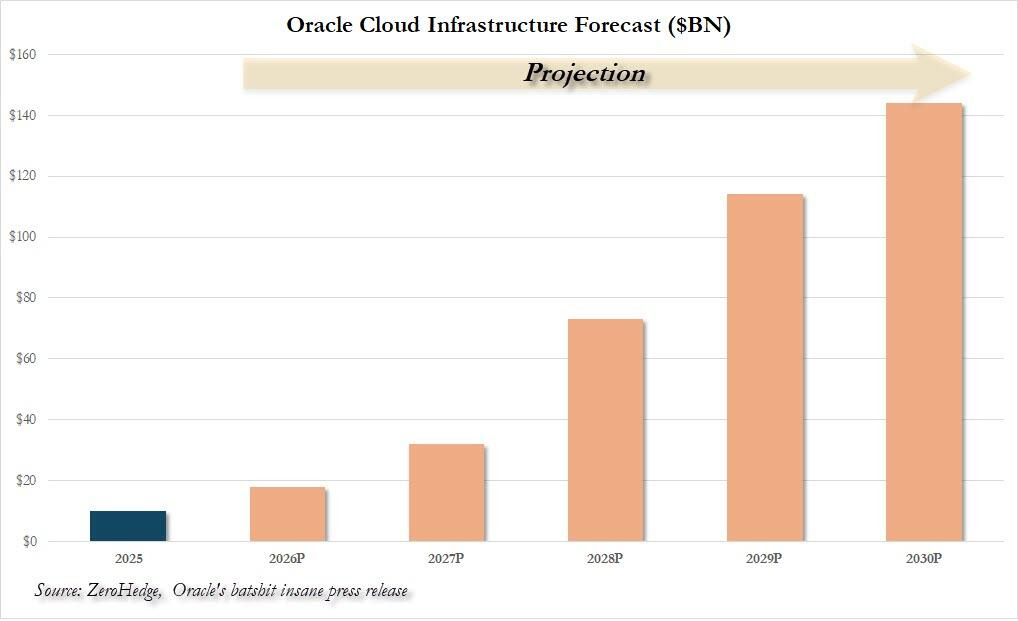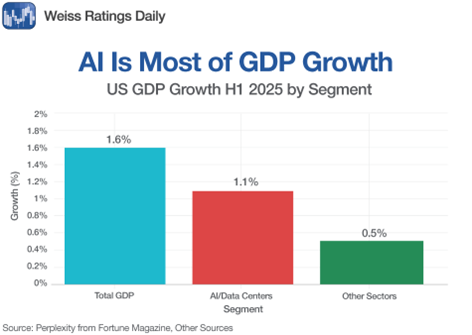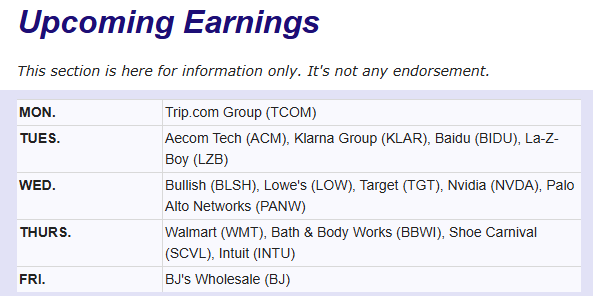.png)

L1 Weekly Stock Market News Analysis
November 16th, 2025

TLDR:
US stocks recovered from steep early losses on Friday but still finished mixed, with the S&P 500 and Nasdaq 100 ending flat while the Dow closed 280 points lower. Nvidia, Microsoft, Oracle, and Palantir rebounded 1%–2% after Thursday’s sharp AI-led selloff, though breadth stayed weak as just as many large caps hit new lows as new highs. The pullback reflected growing pressure around stretched AI valuations, rising funding needs, and fading expectations for a near-term rate cut.
The end of the lengthy government shutdown removed one source of uncertainty but introduced another: agencies are now scrambling to release weeks of delayed economic data, leaving traders without clear signals heading into the next Fed decision.
Meanwhile, Michael Burry’s fund closed and his concentrated put positions against Nvidia and Palantir remained a major talking point last week — reinforcing investor debate over whether the AI complex has run too far, too fast just as the market begins to reassess growth assumptions and capital demands heading into year-end.
Burry Walks Away — and What That Really Signals
This week, Michael Burry announced he’s shutting down Scion Asset Management and returning capital, saying his view of value “has not been in sync with the markets for some time.” This isn’t a tweak in strategy — it’s an exit from a market he no longer recognizes, after spending two years being early and ignored. Remember: he tweeted “SELL” in January 2023, and QQQ has nearly doubled since then on the back of AI megacaps and nonstop liquidity.
He didn’t leave quietly. In recent months Burry loaded up on puts tied to Palantir and Nvidia, accused the big cloud players of stretching asset lives to flatter earnings, and warned that AI infrastructure profits were being smoothed while capex exploded. Now, just as he steps away, the exact complex he targeted is finally cracking: AI leaders have rolled over, and Oracle is down more than 35% as debt, funding needs, and data-center promises collide with cash-flow reality.
The bigger story is what his exit represents. Traditional value investors are running straight into the largest AI spending cycle in history — one built on trillion-dollar buildouts, thin economics, circular vendor financing, and rising dependence on debt over cash. Burry walking off the field is less a personal drama and more a signal of how hard it’s become to apply old-school valuation in a market that’s priced around events and AI narratives first and fundamentals second.

Cracks in the AI Trade — Exactly Where Burry Pointed
The stocks Burry targeted are now breaking down — and the shift reflects something broader: the market had been pricing in AI growth far too quickly, and it’s now getting a reality check. Oracle’s own cloud-infrastructure forecasts — shown in the chart above — illustrate just how aggressive some of these AI-buildout expectations had become.
Oracle: The First Major Stress Point
Oracle is now down over 35%, and Wall Street is finally saying the quiet part out loud.
Barclays warned this month that Oracle’s cash flow doesn’t come close to covering the data-center expansion it promised — especially its multibillion-dollar deal with OpenAI. The bank noted rising interest costs, deteriorating coverage ratios, and “structurally insufficient cash generation” to fund the AI buildout without massive new borrowing.
That is exactly the kind of strain we called out in our November 2nd report:
AI has shifted from an equity boom to a debt-funded construction project.
Oracle is the first place where that pressure is showing up.
Nvidia, Palantir, and CoreWeave Are Softening Too
The slowdown isn’t isolated:
- Nvidia has started to slip as investors question how long GPU budgets can keep rising at this pace and as more supply comes online.
- Palantir — Burry’s largest put position — delivered huge numbers (63% revenue growth, 121% U.S. commercial growth, raised full-year guidance), yet the stock is still drifting off its highs because expectations had been pushed so far ahead of reality that even great results weren’t “good enough.”
- CoreWeave has sold off sharply after a 29% weekly drop, with investors now focused on its rising AI data-center spending, debt load, and reliance on a handful of big customers.
These companies are all tied to the same cycle of borrow → build → buy more chips → repeat.
When financing gets harder, the loop slows.
Why This Matters: AI Powered 75% of the S&P’s Gains
Since late 2022, nearly all index performance came from AI megacaps.
So even mild weakness in the leaders hits everything:
- The market
- The bond market
- The companies building the power grid
- The firms supplying cooling, transformers, and industrial equipment
In other words:
If AI slows, the entire “AI-driven economy” slows with it.
The AI Debt Loop Is Now Being Stress-Tested
This is exactly what we outlined earlier this month:
Nvidia → OpenAI → Oracle → CoreWeave → back to Nvidia
all financed with debt, long-term commitments, and circular revenue flows.
The Oracle decline — amplified by Barclays’ warning — is the first real signal that the cycle isn't frictionless.

Sam Altman Says the Quiet Part: The Government Will Become AI’s Insurer of Last Resort
While cracks are appearing in the AI trade, Sam Altman introduced a very different kind of warning this week — one aimed not at stock prices, but at the system beneath them.
Altman said openly that the government will eventually have to act as the “insurer of last resort” for AI.
Not because companies want a bailout, but because the scale of AI has grown far beyond what private firms can guarantee on their own.
His point was simple:
AI now underpins hospitals, financial networks, military systems, grid operations, and global logistics. Any failure — a model breakdown, a major outage, or a disrupted data-center cluster — would spill into the real economy almost instantly. The risk has become too large for individual companies to absorb.
At the same time, the buildout is accelerating faster than balance sheets can handle. Companies are already borrowing heavily for power, water, and data-center capacity — and those costs are rising every quarter. As Altman put it, AI has reached the point where its continuation depends on system-level support, the same way banking and energy reliability depend on federal backstops.
This isn’t about “saving” AI companies. It’s about the government stepping in when critical infrastructure gets too big to fail — exactly the point where AI now sits.
Why Altman’s Warning Makes Sense — AI Is Becoming a Macro Force
Altman’s comment about the government eventually backstopping AI sounds dramatic, but it fits the scale of what’s happening. AI is no longer a “sector.” It’s becoming a macro driver with economy-wide impact.
AI-linked spending is already influencing GDP growth, and global data-center investment is projected to reach $3 trillion by 2028. Companies are pouring capital into power, land, cooling, and chips at a pace we haven’t seen in any modern technology cycle. The physical footprint alone — electricity, water, industrial equipment — is reshaping national infrastructure plans.
When a technology becomes this foundational to hospitals, grids, logistics, defense, and banking, governments eventually step in because the system becomes too important to leave vulnerable. That’s the context behind Altman’s “insurer of last resort” line.
In other words: AI isn’t just growing — it’s reorganizing how the economy functions.
And this is exactly why investors who rely on traditional valuation anchors — including Burry — are having a hard time right now.
Next we move to the investor reality: even transformative technologies can still disappoint the market in the short run.

The Investor Reality Check — Transformation Doesn’t Guarantee Perfect Earnings
Even though AI is reshaping the economy, markets can still get ahead of themselves. When a stock rises 500%, 800%, or even 1,000% on expectations of future AI revenue, the earnings bar becomes unrealistically high.
This doesn’t mean the technology isn’t real. It means quarter-to-quarter numbers rarely keep up with the story investors build around them.
That’s the actionable takeaway:
AI can transform entire industries while still producing earnings that fall short of market expectations.
The long-term story is intact, but the short-term reality can be bumpy — especially for stocks priced as if every quarter must be flawless.
Last's Weeks Sector Winners & Losers
Consumer stocks took the biggest hits last week while energy, healthcare, and materials rose slightly as investors rotated out of high priced momentum stocks into underperforming areas. Among the industries, the biggest winners were goldminers, biotechs, oil drillers while the biggest losers were solar, software, and mining stocks.

Upcoming Events This Week
With the government shutdown now over, agencies are preparing revised schedules for the economic data they were forced to delay, though some reports may still be abandoned due to disrupted collection. In the meantime, markets will rely on private indicators: flash S&P PMIs, existing home sales, the NAHB housing index, weekly ADP employment data, and regional Fed surveys.
Investors are also watching a heavy earnings slate — highlighted by Nvidia, which will offer the clearest read yet on AI sentiment — along with Walmart, Target, Home Depot, Lowe’s, TJX, Palo Alto Networks, Deere, and Intuit for signals on consumer strength and corporate demand.
On the policy front, minutes from the Fed and RBA meetings are due. Globally, flash PMIs arrive for the Eurozone, UK, Japan, Australia, and India, while Japan posts Q3 GDP and October inflation. Canada updates CPI, and GDP releases are scheduled for Switzerland, Denmark, Norway, Mexico, and Thailand.
.png)

Company News
LevelFields AI Stock Alerts Last Week
SNTX Jumps 37% on OTCID Verification and New CEO Appointment
Suntex Enterprises (SNTX) surged 37% after the company announced it achieved OTCID Verified status on OTC Markets and named Javier Leal as its new CEO. The verification milestone and leadership change sparked a wave of speculative buying as traders positioned around potential restructuring and renewed operational visibility.
INR Rises 15% After Strong Q3 Results and Major Buyback
Infinity Natural Resources (INR) climbed 15% following Q3 earnings, updated full-year guidance, and the announcement of a $75 million share repurchase program — roughly 10% of its market cap. The sizable buyback, paired with stronger operational performance, fueled a sharp repricing as investors rotated back into small-cap energy names.

Introducing the LevelFields Portfolio Tracker

We’ve just launched the new LevelFields Portfolio platform — a centralized dashboard built for active investors and wealth managers to track their trades, organize trade ideas, and monitor real or prospective portfolios.
We've replaced Excel and Google Sheets trade tracking with software that updates as prices and valuations of stocks change, so you don't lose money by missing great entry and exit points.
You can sign up for free!
What it does:
- Lets you add both real positions and idea-stage trades into one unified portfolio.
- Tracks allocation, profit/loss, KPIs, P/E, price targets, and thesis notes in one place.
- Allows you to set real-time alerts on valuation changes, price moves, and price targets using bulk editing (e.g. one alert for all holdings).
- Lets you toggle any ticker between “Idea → Holding → Closed” while preserving the original trade thesis and exit notes.
- Designed for traders, advisors, and fund managers who need a live, organized view of positions + rationale, not just a static spreadsheet of tickers.
- Import CSV file of existing ideas, notes, and portfolio holdings for a quick start
- Keep track of reasons you bought and sold to analyze your performance and for compliance
- Design your own model portfolios based on allocations, sector, and industry
-




.png)
How to use LevelFields for Options Trading
Tracking Stocks Without Spreadsheets
The Truth About Dividend Stocks
What's LevelFields' Premium Membership Provide?

This is not financial advice. All information represent opinions only for informational purposes. Given the vast number of stocks we cover in these reports, assume staff covering stocks have positions in stocks discussed.
Have feedback or a request for specific data? Drop us a note at support@levelfields.ai


